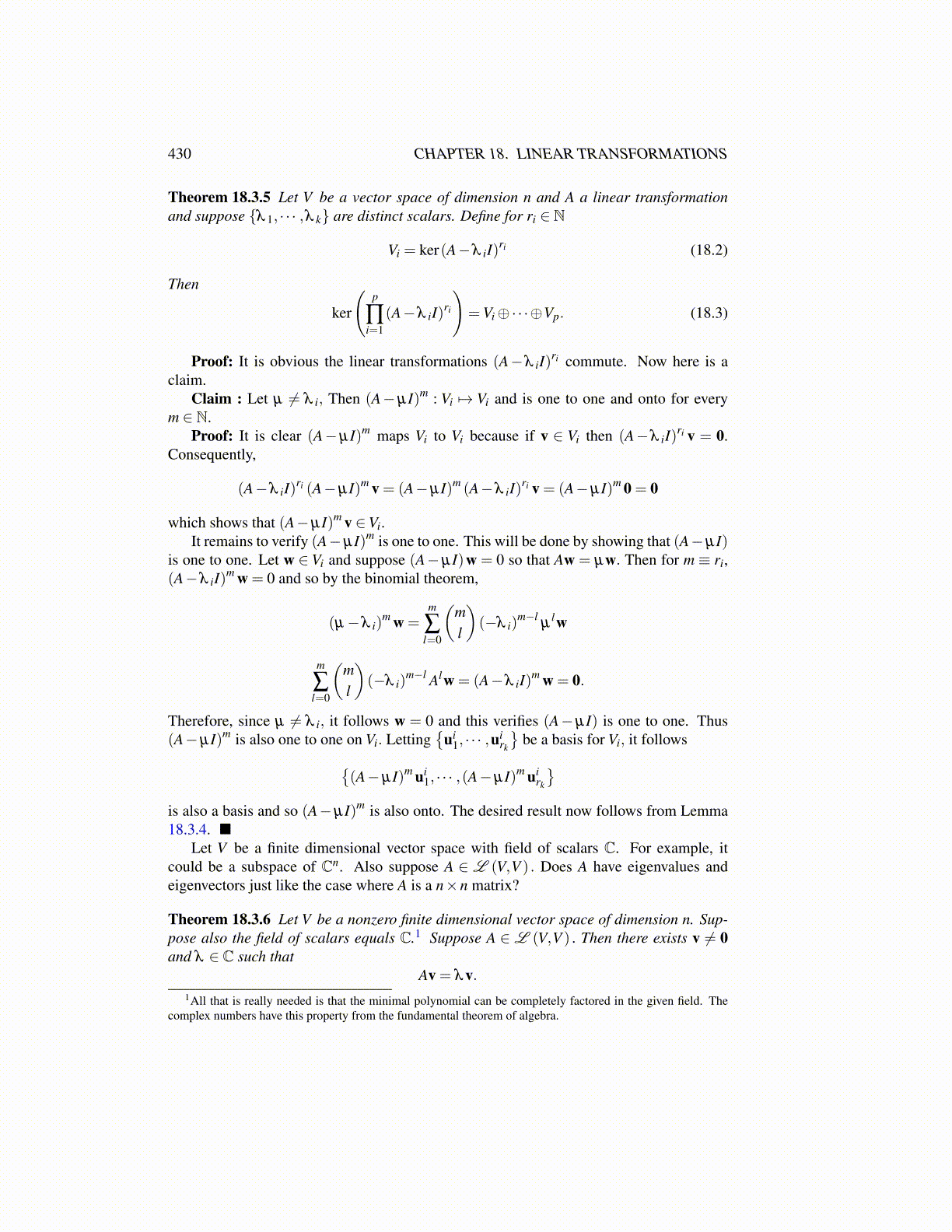
430 CHAPTER 18. LINEAR TRANSFORMATIONS
Theorem 18.3.5 Let V be a vector space of dimension n and A a linear transformationand suppose {λ 1, · · · ,λ k} are distinct scalars. Define for ri ∈ N
Vi = ker(A−λ iI)ri (18.2)
Then
ker
(p
∏i=1
(A−λ iI)ri
)=Vi⊕·· ·⊕Vp. (18.3)
Proof: It is obvious the linear transformations (A−λ iI)ri commute. Now here is a
claim.Claim : Let µ ̸= λ i, Then (A−µI)m : Vi 7→ Vi and is one to one and onto for every
m ∈ N.Proof: It is clear (A−µI)m maps Vi to Vi because if v ∈ Vi then (A−λ iI)
ri v = 0.Consequently,
(A−λ iI)ri (A−µI)m v = (A−µI)m (A−λ iI)
ri v = (A−µI)m 0 = 0
which shows that (A−µI)m v ∈Vi.It remains to verify (A−µI)m is one to one. This will be done by showing that (A−µI)
is one to one. Let w ∈ Vi and suppose (A−µI)w = 0 so that Aw = µw. Then for m ≡ ri,(A−λ iI)
m w = 0 and so by the binomial theorem,
(µ−λ i)m w =
m
∑l=0
(ml
)(−λ i)
m−lµ
lw
m
∑l=0
(ml
)(−λ i)
m−l Alw = (A−λ iI)m w = 0.
Therefore, since µ ̸= λ i, it follows w = 0 and this verifies (A−µI) is one to one. Thus(A−µI)m is also one to one on Vi. Letting
{ui
1, · · · ,uirk
}be a basis for Vi, it follows{
(A−µI)m ui1, · · · ,(A−µI)m ui
rk
}is also a basis and so (A−µI)m is also onto. The desired result now follows from Lemma18.3.4. ■
Let V be a finite dimensional vector space with field of scalars C. For example, itcould be a subspace of Cn. Also suppose A ∈ L (V,V ) . Does A have eigenvalues andeigenvectors just like the case where A is a n×n matrix?
Theorem 18.3.6 Let V be a nonzero finite dimensional vector space of dimension n. Sup-pose also the field of scalars equals C.1 Suppose A ∈L (V,V ) . Then there exists v ̸= 0and λ ∈ C such that
Av = λv.1All that is really needed is that the minimal polynomial can be completely factored in the given field. The
complex numbers have this property from the fundamental theorem of algebra.